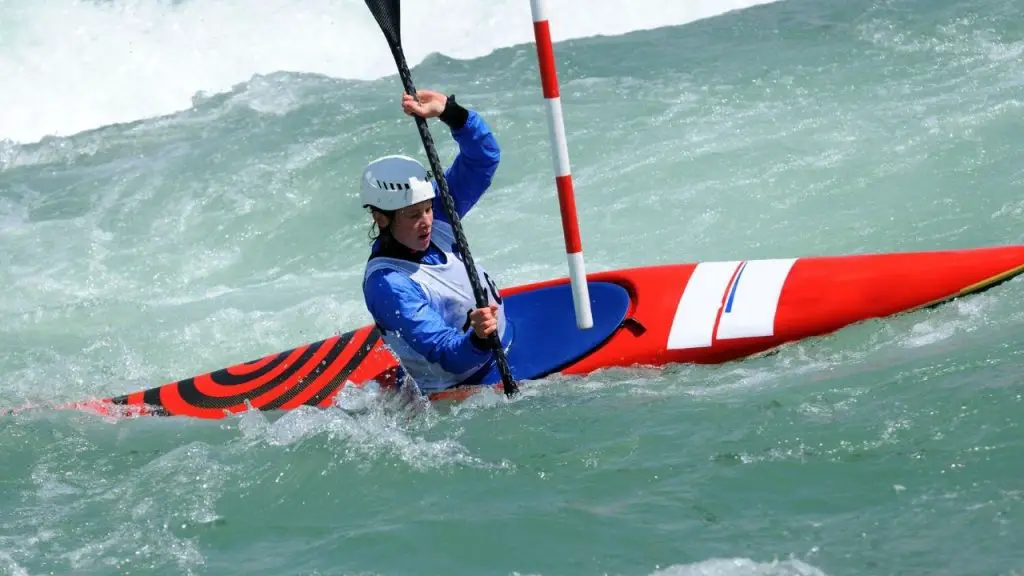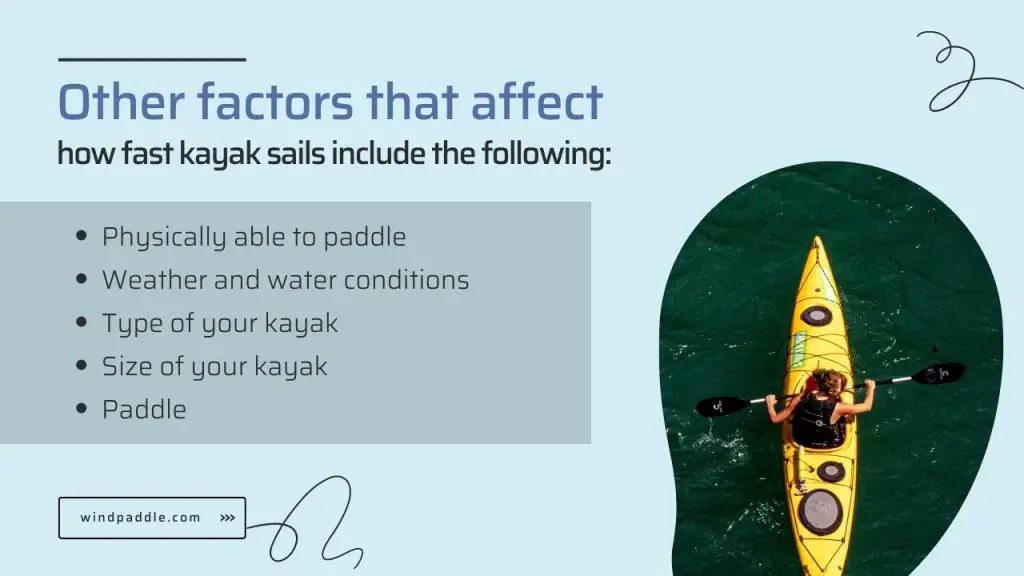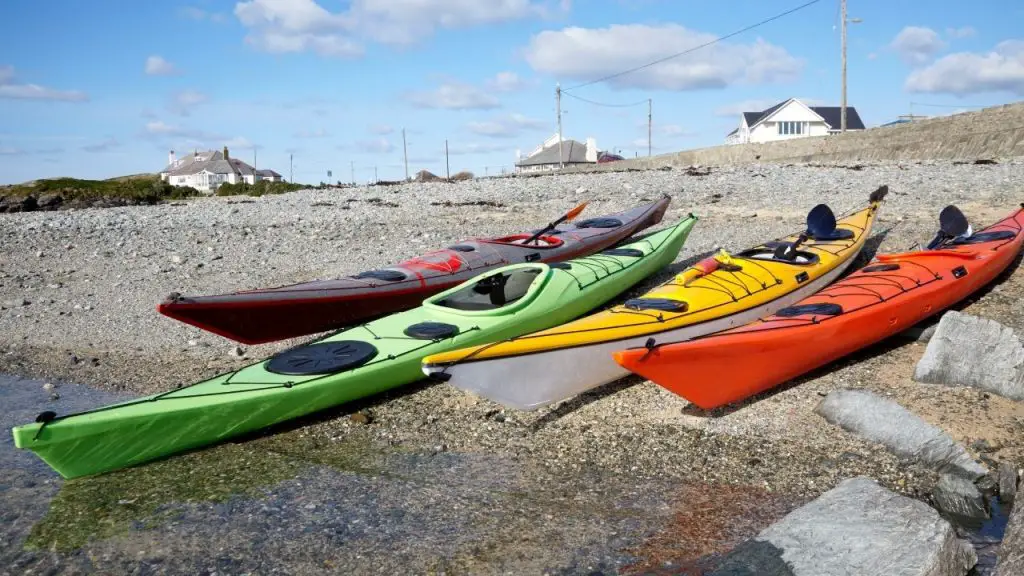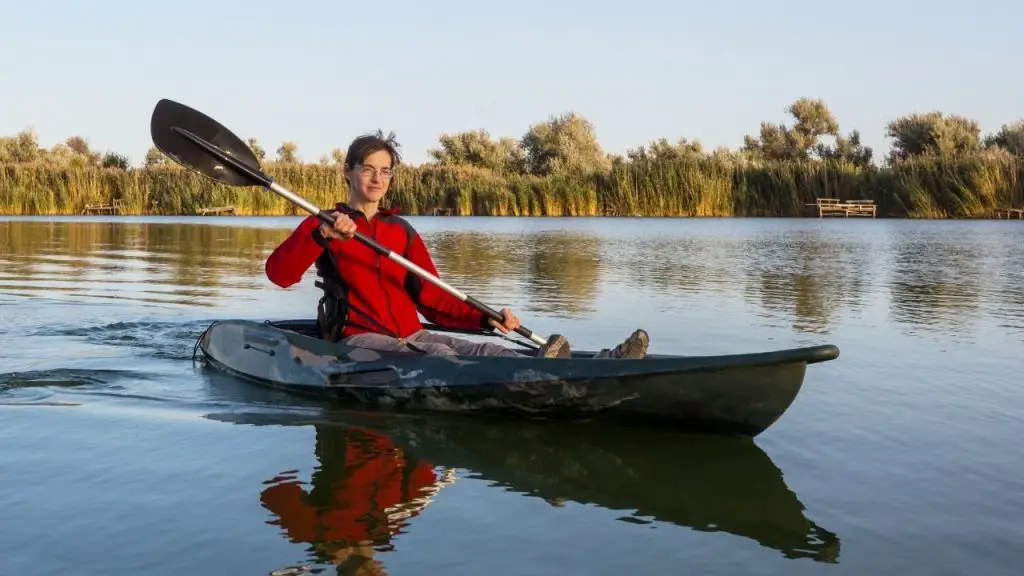You are probably asking yourself how long it takes to kayak 3,5 or 7 miles. The speed of a kayak can be a concern, especially if you are a beginner. Unfortunately, no standard value exists for it since it depends on many factors.
Most experienced kayakers can average 3 miles per hour. But if you are a beginner, doing 2 miles per hour is a remarkable performance. That means some kayakers can do the 7 miles in about 3 hours or more.
Read on for details on how fast a kayak can go and what affects its speed. We will also mention tips to make your kayak go faster. Stay tuned!
Table of Contents
How Fast Does a Kayak Go?

The speed of a kayak depends on many factors, such as the type of kayak, the paddler’s strength and technique, wind conditions, and the water conditions.
The world record for the farthtest kayak speed is held by Sebastian Szubski (Poland) in Ocwieka who reached a speed on flat water in 24 hours is 251.71 km (156.41 miles), its mean 6.5 miles per hour.
How Long Does It Take to Kayak 3, 5 and 7 Miles?
Most beginners average at 2 miles to 3 miles per hour. However, that value is influenced by many factors. It will depend on whether you are kayaking in the lake, ocean, or river. You are likely to go faster in the river kayaking downstream because of the support from the water current.
Only experienced kayakers can do the 7 miles in about 2 hours if they maintain a speed of more than 3 miles per hour. But for most intermediate kayakers out there, it will take a little more time to cover the same distance. The more experienced you are, the more likely you will take less time.
Wind and water currents can work for or against you if you are out in the sea. That will determine how fast your kayak goes. Lucky kayakers who get support from nature can clock at 5 miles per hour, meaning they take much less to cover the 7 miles.

Other factors that affect how fast kayak sails include the following:
- Physically able to paddle
- Weather and water conditions
- Type of your kayak
- Size of your kayak
- Paddle
6 Factors That Impact Kayak Speed
We have only mentioned a few factors determining how fast you can cover 7 miles with a kayak. This section gives you detailed information on how much those factors and many others influence your paddling speed.
Type of Your Kayak
The length of the kayak significantly affects its speed. So, it is crucial to understand how kayak types and designs affect how fast you can paddle them.
Holding other factors constant, narrow-beamed and longer kayaks move faster than wide-beamed and shorter kayakers. That is because the former is more streamlined. Therefore, it experiences less resistance in the water. It is the same reason you find many ocean kayaks long and narrow.
Also, larger and heavier kayaks are slower than smaller and lighter ones. The extra weight acts as an anchor and resists the forward movement when you paddle.
Go for small, long, narrow, and lightweight kayaks if you want a kayak for speed. They are built to sail faster.

Location and Weather
You can kayak in the river, lake, or ocean. These locations affect the kayak speed and how fast you can paddle. As mentioned, kayaking downstream is much faster than upstream if you even dare to attempt it. You cannot also compare it with paddling on still waters.
Environmental and weather conditions can also affect your paddling speeds. Wind and water currents can work for or against you. If you are lucky, these elements may go in your direction. The overall effect will be a faster kayak.
Rough water will generally slow you down compared to calm and still waters. The small waves formed on your path that you need to break through influence your speed for the worse.
Water conditions change due to weather and tides. You should choose time appropriately if you want to paddle faster and set personal records.
Paddle Design
Like all factors already discussed, the paddle design significantly affects your paddling speed. Unfortunately, it is one of the most overlooked things by beginners.
First, a paddle should match your height, shoulder width, and kayak’s width. You should consider that if you want to kayak faster.
Also, consider the paddle type. The most common ones are the high-angle and low-angle paddles. The former captures and holds more water, leading to better propulsion. They are usually shorter and wide to match narrow kayaks built for speed.
Low-angle paddles are long and narrow. Their design allows them to cut through water effortlessly, reducing fatigue on your hand. However, they are not ideal for speed. Consider them if you have a wide kayak for recreational or leisure paddling.
Weight You’re Carrying
You guessed it right if you said the heavier the kayak is, the slower it will go. The overall weight of the kayak and its load significantly affects its speed. The extra weight you carry on board is like an anchor to slow you down, which you can only compensate for with faster paddling.
Keep your kayak as light as possible and carry only essential things you will need if speed is your concern. The lighter it is, the faster and easier it will be to paddle.
Your Fitness Level and Technique
It goes without saying that the fast your kayak can sail depends on your experience and paddling technique. Physical strength to push through the water is needed, which varies from one paddler to the next.
Beginners are likely to go slower, regardless of the water conditions. Then as they become more experienced and used to their kayakers, they develop kayaking muscles to paddle faster. They can endure long hours of stroking and become more efficient in kayaking. Ultimately, their speed increases.
You can perfect your paddling technique through kayaking-oriented gym exercises. You develop better muscle and mind coordination that boosts your paddling speed.
Paths and Obstacles
Paddling on still and calm water in a straight path is faster than doing the same on rough waters with obstacles. Dodging them and overcoming waves take time and ultimately slow you down.
You will find it more time-consuming if you have to avoid overhanging trees, floating debris, and other kayakers and water vessels on your path. To go faster, consider kayaking on calm and clear, flat waters.
Tips For Kayaking Faster
How can you make your kayak go faster? You should avoid the factors discussed in the previous section and choose what favors your speed. But that is not all. Consider using the following tips:
- Use your larger muscles and arms to paddle
- Fix more paddle blades at the end of your kayak paddle
- Relax your grip on the shaft of your paddle
- Learn how to use a feathered paddle
- Use a bent shaft blade
- Position your body correctly
- Use the ball of your feet to push the foot pegs
- Know the area or get a GPS for efficient navigation
- Have a flexible itinerary
Garmin 010-01550-00 Striker 4 with Transducer
How Many Miles Can a Beginner Kayak In A Day?
Planning your kayaking trip or adventure is a significant part of your journey. When doing so, divide the total distance you want to cover into daily milestones and compare that with your kayaking speed.
On average, a reasonably experienced paddler can cover 10-20 miles when kayaking in a mid-sized solo boat. As mentioned, a beginner can do it at 2 miles per hour. Suppose you can endure it for just 5 hours a day, expect to cover 10 miles.
However, you should factor in anything that can slow you down on your path. Water conditions, weather, paddle design, obstacles on your patch, kayak type and design, and many others can significantly affect your daily kayaking mileage.

FAQs
How long do 10 miles take on a kayak?
The time it takes to sail 10 miles on a kayak depends on many factors. With all everything constant, a beginner paddler needs about 5 hours to cover that distance.
However, an experienced kayaker capable of more than three miles an hour can cover the same distance in 3 or fewer hours.
How long does it take to kayak 10 miles on a river?
Kayaking along the river channel downstream is much faster and easier. You can clock at 5 miles per hour if you are supported by water currents and have no stopovers. That means you only need about 2 hours to cover 5 miles on a river.
How long does it take to kayak 3 miles?
Theoretically, experienced kayakers need only an hour or less to cover the 3 miles if weather and water conditions favor you. But beginners may take more than an hour because their paddling technique is not perfect, and they may also lack the kayaking muscle.
Conclusion
It takes about 2 hours to kayak through 7 miles if you are an experienced kayaker. A beginner may need more time, but that also depends on other factors.
The kayak type, weather conditions, paddle design, overall kayak weight, and location affect kayak speed. You will be faster if paddling on a river downstream or on still and calm flat waters.
Thank you for reading this article at Windpaddle, and we highly appreciate your time. We kindly ask you to share it with your friends and paddlers you know to spread the word and inform them. You can also explore our website for related content.

